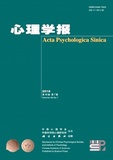The relationship between language and color cognition is key to understanding language and cognition. With the arguments between linguistic relevance and linguistic universal hypotheses, researchers prefer the eclectic theory that color cognition includes physics, perception, and culture-related properties. Given these theories and various investigations, interaction theory between color terms and color cognition has been proposed. One argument suggests that color perception should be influenced by language and culture, given the normal sense organs and level of intelligence.
Numerous types of studies have proven that language and culture play a role in color cognition, but how such a role is performed remains to be fully understood. Discussions on the essential mechanism of this effect remain lacking, and whether this effect is a direct or indirect effect (i.e., language strategies or cognition structure changes) continues to be unclear. According to the literature, the color category perception effect proposes that people are more likely to distinguish colors from different colors than those that landed in the same area. Thus, two categories of color were used as materials in past research, which made it difficult to distinguish between the direct and indirect effects. Accordingly, this paper employed just one category color, which was further divided into two different categories. Color culture is import to a nation. Thus, green is vital to Uygur culture, with red as the counterpart for the Han culture. In relation to this, the present study designed a perceptual task (Experiment 1) as well as classification and recognition tasks containing memory (Experiments 2 and 3), in order to explore the effect of language and culture on color cognition for the Uygur and Han nationalities.
Focal colors of red (RGB: 0, 255, 0) and green (RGB: 255, 0, 0) were selected as base points, and a vertical demarcation line was drawn on the RGB chromatography. On each side of the line, nine different stimuli in the same lightness saturation level (240-120) but with different chromaticities were selected. In Experiment 1, three colors (two from the same side of green or red and another from the other side) constitute one set of experimental material. Participants were asked to judge as quickly and as accurately as possible whether the left or the right color block looked more similar to the middle one, and press the corresponding button on a response box. A total of 62 college students participated in the experiment (31 of Han nationality and 31 of Uygur nationality). In Experiment 2, the materials and the participants (in terms of number and categories) were identical to those in Experiment 1. Participants were instructed to remember the colors and identify as quickly and as accurately as possible whether the following colors belong to the left or to the right of the color pair, and then press the corresponding button on a response box. In Experiment 3, 62 participants from the two nationalities who were using identical materials were asked to judge as quickly and as accurately as possible whether the left or the right color looked more similar to the standard one, and then press the corresponding button on the response box.
Results showed significant differences in the perception, classification, and recognition tasks between the Uygur and Han nationalities. Compared with the Han nationality, the Uygur nationality had the advantage in distinguishing, classifying, and even recognizing green, but suffered a disadvantage when processing the color red. For the perception task, the two groups both spent a long time in the classification and recognition tasks. Accordingly, we believe that language and cultural differences in terms of perceiving the green and red colors affect color cognition and that such an effect is indirect, that is, language and culture can influence the color perception structure.




